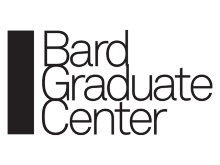Conserving Active Matter
25.03.2022 - 10.07.2022, Bard Graduate Center Gallery, Columbia University, New York City
Research from ICD's material programming research group on bio based meteorosensitive hygromorphs and self-shaping wood furntiure will be displayed as part of the exhibition Conserving Active Matter in NYC this spring. Throught out the start of the exhbitit a prototype from the project HygroShape will shape from flat to curved, adapting its geometry to on the local cimactic conditions
From the curators:
"For as long as people have made and kept things, they have cared for and repaired them. Today’s conservator uses a variety of tools and categories developed over the last 150 years to do this work. In the next decades, new kinds of materials and a new scale of change will pose unprecedented challenges. As conservators turn to an ever-expanding set of constituencies, collaborators, and knowledge claims to do this work, how might they reconsider their role in conserving such “active matter” and in conversations about environmental and cultural sustainability? Conserving Active Matter explores the activity of matter through objects that span five continents and range in time from the Paleolithic to the present. From the things that clothe us to those that shelter us; from things that reflect our interest in the past to those that enable its performance in the present; and from sacred objects to the profane, Conserving Active Matter envisions the work of conservation as essential for the lives of the things that sustain us."
Conservite Active Matter - Meteorsensitive Prototypes
For more information please visit: Brad Center Exhibitions page
Bard Graduate Center Gallery
18 West 86th St.
New York, NY 10024
About Bard Graduate Center
As the leading research institute in the United States dedicated to the study of decorative arts, design history, and material culture, Bard Graduate Center has pioneered the study of objects to better understand the cultural history of the material world. Offering experiences for scholars, students, and the general public alike, Bard Graduate Center is built on multidisciplinary study and the integration of research, graduate teaching, and public exhibitions. Since its founding in 1993, Bard Graduate Center has established a network of more than 400 alumni who work in leading museums, universities, and institutions worldwide to advance new ways of thinking about material culture. For more
information, visit bgc.bard.edu.


